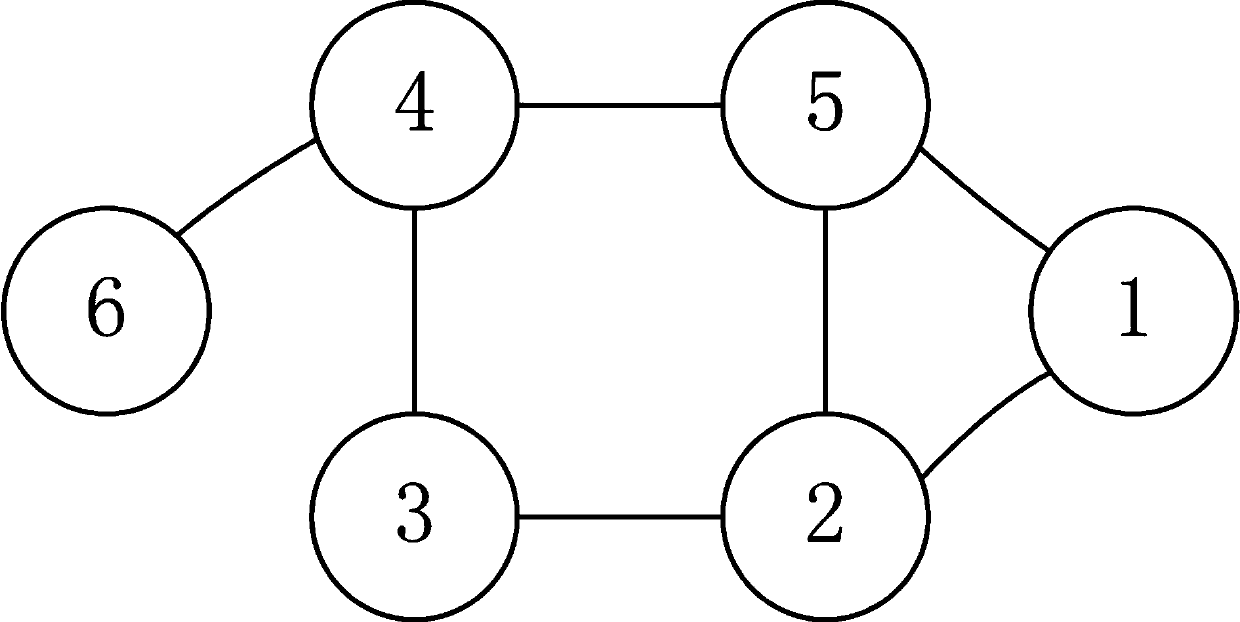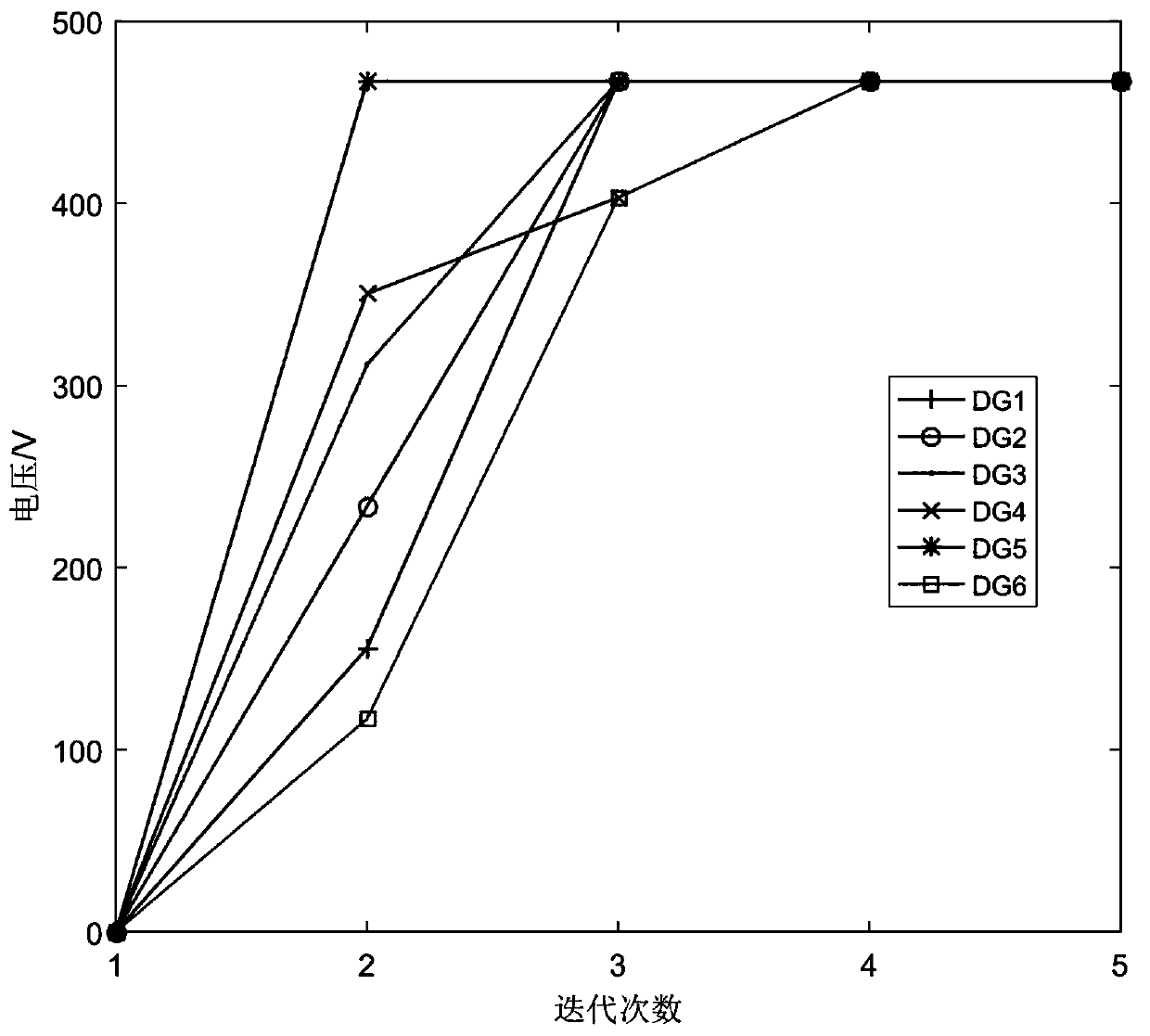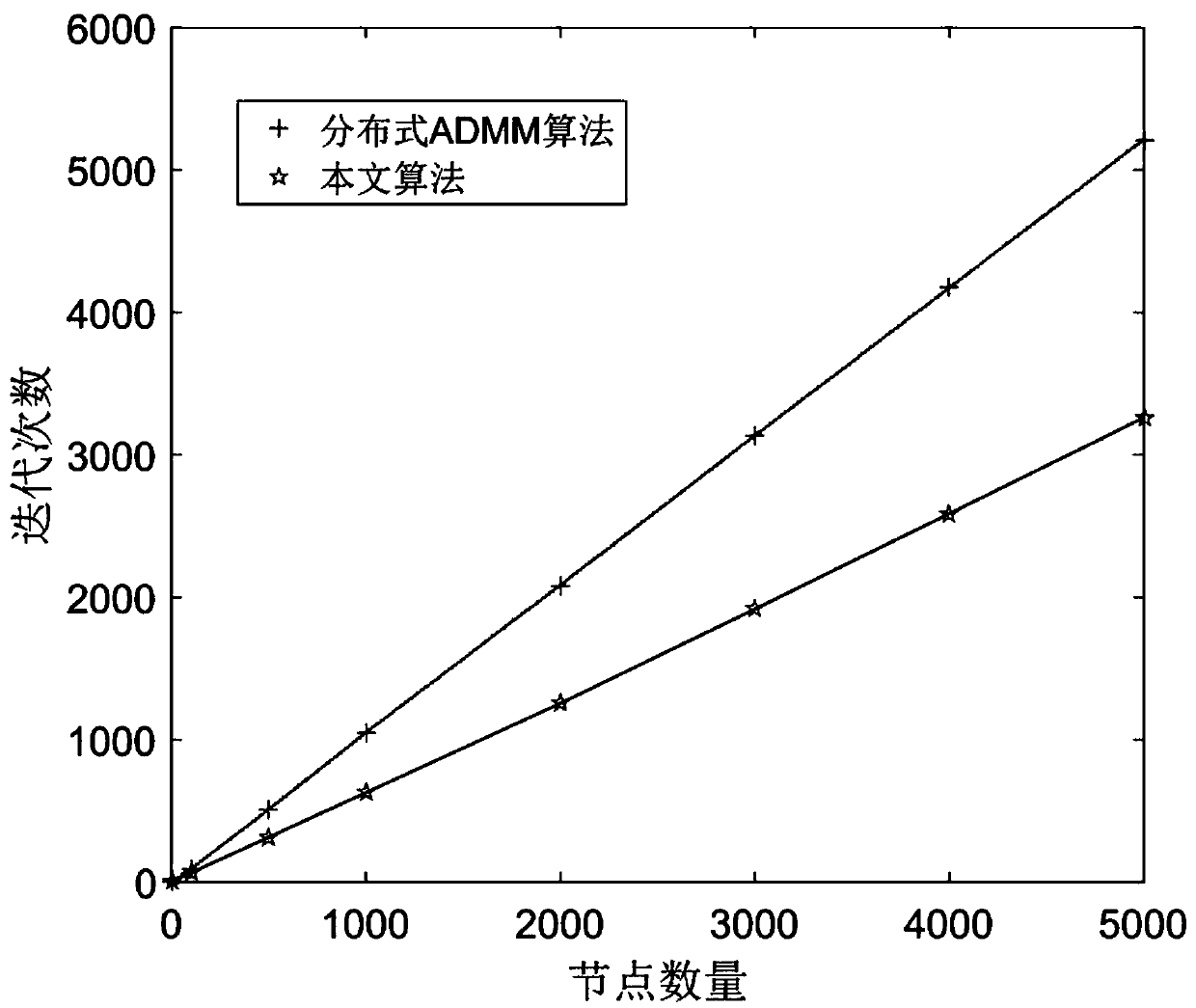Optimization method of multi-agent system consistency problem based on sub-graph processing
A technology of multi-agent system and optimization method, applied in the field of multi-agent system, can solve the problems of slow convergence speed, node storage capacity, and higher computing power requirements.
- Summary
- Abstract
- Description
- Claims
- Application Information
AI Technical Summary
Problems solved by technology
Method used
Image
Examples
Embodiment
[0057] An optimization method for the consensus problem of multi-agent systems based on subgraph processing, including the following steps:
[0058] 1) Construct the graph signal model of the multi-agent system: according to the communication situation among the agents in the multi-agent system, the topological structure of the graph signal model is drawn, and the observation data of the agent is used as the node signal in the graph signal model, and the multi-agent system is established. The graph signal model of the agent system G=(V,E,A), where V={1,2,…,N} represents the set of nodes; E={e ij} represents the set of edges, e ij =(i,j) indicates that there is an edge connecting node i and node j, A indicates the adjacency matrix of the whole graph, and the adjacency matrix A={a ij}∈R N×N , when there is an edge between nodes i and j a ij =a ji =1, define the degree matrix D of the graph D=diag(d i ),in The Laplacian matrix of a graph is defined as formula (1):
[0059...
PUM
 Login to View More
Login to View More Abstract
Description
Claims
Application Information
 Login to View More
Login to View More - R&D Engineer
- R&D Manager
- IP Professional
- Industry Leading Data Capabilities
- Powerful AI technology
- Patent DNA Extraction
Browse by: Latest US Patents, China's latest patents, Technical Efficacy Thesaurus, Application Domain, Technology Topic, Popular Technical Reports.
© 2024 PatSnap. All rights reserved.Legal|Privacy policy|Modern Slavery Act Transparency Statement|Sitemap|About US| Contact US: help@patsnap.com










